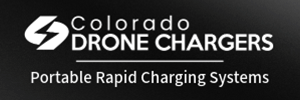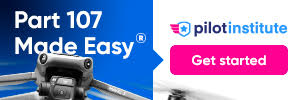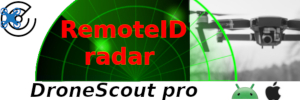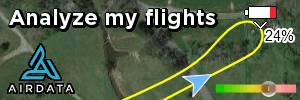Is there a way to have the drone to slowly decelerate ? Right now I have 1 waypoint at 30 km/h, and a second waypoint at 5 km/h. I'd like to have the drone to slow down gradually instead of suddenly "braking" at waypoint 2.
You are using an out of date browser. It may not display this or other websites correctly.
You should upgrade or use an alternative browser.
You should upgrade or use an alternative browser.
Gradual Deceleration in Litchi's Waypoint
- Thread starter mr.jipi_
- Start date
Think you have 2 options for this ...
1. You can put in more WP in between each ramping down the speed by say ... 5km/h until where you want it to be 5km/h.
2. Dial in 5km/h as cruising speed & 30km/h as max flight speed in the mission settings ... with these settings use max right stick forward for 30km/h then ease stick down to neutral to get transition to 5km/h.
1. You can put in more WP in between each ramping down the speed by say ... 5km/h until where you want it to be 5km/h.
2. Dial in 5km/h as cruising speed & 30km/h as max flight speed in the mission settings ... with these settings use max right stick forward for 30km/h then ease stick down to neutral to get transition to 5km/h.
Prismatic
Well-Known Member
The absence of speed ramping is by far my biggest beef with Litchi, and neither workaround is perfect.Think you have 2 options for this ...
1. You can put in more WP in between each ramping down the speed by say ... 5km/h until where you want it to be 5km/h.
2. Dial in 5km/h as cruising speed & 30km/h as max flight speed in the mission settings ... with these settings use max right stick forward for 30km/h then ease stick down to neutral to get transition to 5km/h.
1. Adding extra WPs to "interpolate" the speed change is tedious and inflexible to mission changes. And it can still induce some visible lurches, especially at low altitude. Your speed-ramping WPs must be dense and fine-tuned.
Even worse, it won't really work at all if there's a curving directional change coincident with the speed change. Let's set Leg 1 at 20 km/h, and Leg 2 at 5 km/h, with a cinematically essential sweeping curve between. The blue line describes what should be a descending, decelerating curved pass by POI2:
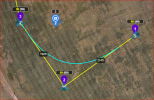
Simple, right? We want the drone to begin slowing just as it leaves the yellow line of Leg 1, to finally reach 5 km/h just where it rejoins the yellow line of Leg 2. But adding a WP anywhere between WP1 and WP3 changes the curve! What a Royal Pain in the Patoot! Litchi actively interferes with our attempts to get what we want. No, we'll have to create speed-and-altitude-ramped WPs that would lie on that blue spline curve (if we could see it), with no help whatsoever from Litchi. Good luck with that!
Tech note: The drone doesn't actually fly the blue spline curve anyway. In reality, Litchi just inserts 21 unseen "smoothing" WPs along the blue path to approximate the spline curve. So they could easily add incremental speed changes to those WPs, with user control of the relative "steepness" of the ramp. Why they haven't is a mystery.
2. Manually managing the drone's speed avoids the headaches above, but at the cost of full automation. You can no longer launch your mission and go mix a pitcher of daiquiris awaiting its punctual return; the mission now requires your full-time attention and intervention. Seriously : flight automation is the whole point of Litchi waypoint missions! It's just absurd that something as basic as speed ramping demands flight-time pilot control.
Also, with this method it's hard to get a remotely accurate estimate for the mission duration. This isn't a big issue, really, unless your mission might push the flight-time limit for your drone (but see the next point). If you need to be sure, you must estimate the duration based on your planned flight speeds along the way, and then actually fly the mission precisely to that plan. Easier said than done, to be sure, but by no means impossible.
Take care you don't set a Cruise Speed too slow. In the event of signal loss you won't be able to "push" the drone to a higher speed. Creeping along at, say 5 km/h, the aircraft is obviously more likely to initiate a low-battery RTH before the mission ends or signal is reacquired.
-----------------------------------
Of the two, "manual speed management" is usually better, as its disadvantages are fewer and lesser than the alternative. It's far more amenable to changes as you develop a mission, and you probably ought not be mixing daiquiris while your bird is in the air anyway.
You might like to set the Cruise Speed to half the drone's maximum. You can run it up to its max speed by pushing the right stick full forward. And by pulling back on the right-stick, you can slow it down to a crawl, or even go in reverse : it always stays on the prescribed course, including curving tracks.
But it bears repeating : the absence of speed ramping is a big fat ugly crater in Litchi's value proposition.
Last edited:
RonW
Well-Known Member
I tend to insert more WP's before the curved turn, so that I enter the curve at a slower speed. I find that using Litchi this way gives very smooth turns and stable video. Occaisionally, I'll insert extra WP's in the curved turn, and test in VLM as all missions I produce. I find that my videos are stable enough, however, Litchi would benefit from proper speed ramping - come on Litchi, get it done!
Prismatic
Well-Known Member
I need to enter that big sweeping turn fast, and decelerate for its full measure. Slowing the aircraft before the curve is initiated would be cinematically useless. Making the turn tighter ... again, cinematically useless.I tend to insert more WP's before the curved turn, so that I enter the curve at a slower speed. I find that using Litchi this way gives very smooth turns and stable video. Occaisionally, I'll insert extra WP's in the curved turn, and test in VLM as all missions I produce. I find that my videos are stable enough, however, Litchi would benefit from proper speed ramping - come on Litchi, get it done!
Come on, Litchi, make it happen!
PS: VLM is positively the bee's knees for anyone using Litchi!
Last edited:
Similar threads
- Replies
- 3
- Views
- 1K
- Replies
- 8
- Views
- 2K
- Replies
- 4
- Views
- 601
- Replies
- 14
- Views
- 4K
DJI Drone Deals
New Threads
-
Air 3s Flooding in Southwest Washington
- Started by IlluminationsfromtheAttic
- Replies: 2
-
-
-
-
Members online
Total: 4,411 (members: 12, guests: 4,399)



